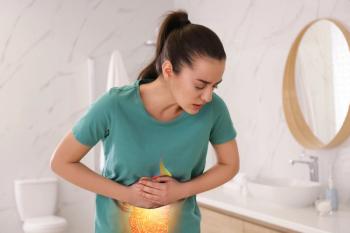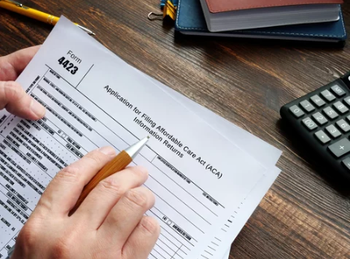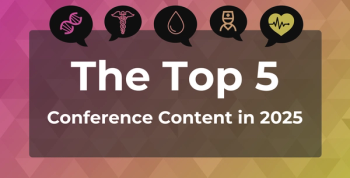
Study Finds Rise in Use of ADHD, Asthma Drugs in Children
A new study published in JAMA showed that although estimates of prescription medication use for children and teens fell overall from 1999 to 2014, patterns differed by types of medications, with drugs for attention-deficit/hyperactivity disorder (ADHD), asthma, and contraception all increasing. Use of antibiotics, antihistamines, and upper respiratory combination medications decreased.
A new study published in JAMA showed that although estimates of prescription medication use for children and teens fell overall from 1999 to 2014, patterns differed by types of medications, with drugs for attention-deficit/hyperactivity disorder (ADHD), asthma, and contraception all increasing.1
Use of antibiotics, antihistamines, and upper respiratory combination medications decreased.
The observational study was somewhat limited, as it did not capture dosages, formulations, or frequency of use, and the survey didn’t collect data on most over-the-counter medications; thus, underreporting is possible, the authors said.
The report included 38,277 children and adolescents (from birth to age 19 years) who participated in the National Health and Nutrition Examination Survey (NHANES) from 1999-2014. NHANES, a nationally representative survey conducted every 2 years, measures sex, age, race, household income, education, insurance status, and current health status (exposures); use of prescription medications, and use of medications by therapeutic class.
The use of any prescription medication in the past 30 days decreased from 24.6% to 21.9%, according to the study.
Overall, use of ADHD medications increased from 2.8% to 3.5% (β = 0.15 percentage points every 2 years [95% CI, 0.03 to 0.28]; P = .02), with significant increases in use of both centrally acting antiadrenergic agents and amphetamines.
Among children aged 6 to 11 years, use of ADHD medications increased from 4.8% to 6.2% (β = 0.32 percentage points every 2 years [95% CI, 0.04 to 0.59]; P = .03); specifically, there was an increase in the use of amphetamines.
In an accompanying editorial, Gary L. Freed, MD, MPH, of the Child Health Evaluation and Research Center, University of Michigan, called the rise of amphetamine use in children between 6 and 11 years “vexing.”2
“Historically, clinicians have been hesitant to use such medications for children at the lower end of this age range because of the difficulties in diagnosing this condition at younger ages and concern about the effect of stimulants on growth and blood pressure,” he wrote. “However, clinicians are under increasing pressure from parents and schools to diagnose and treat patients with behavioral conduct disorders and ADHD. Additional pressure may come from some parents with concerns regarding their child’s school performance, increasingly at younger ages and earlier grade levels. Although children who meet diagnostic criteria for ADHD and can benefit from pharmacologic therapy should not be denied such care, some physicians may be too quick to prescribe stimulant medication given these parental pressures or may not be sufficiently trained to make a diagnosis of this condition. Primary care physicians should be adequately trained in the care of children with ADHD and the need for assessments of the appropriateness of the care of children in this age group. Caution must be exercised in the interpretation of these findings, as they do not clearly demonstrate whether stimulants are being overused or underused.”
Overall, he wrote, some of the trends may signal possible health improvements, others may suggest little progress, and others are difficult to interpret.
Other findings include:
- Antipsychotic use increased in children aged 6 to 11 years, but not in adolescents.
- Antibiotic use in children and adolescents fell from 8.4% to 4.5% from 1999-2002 to 2011-2014, likely reflecting the success of public health efforts to curb avoidable antibiotic use.
- Among children aged 0 to 23 months, use of antibiotics fell from 15.5% to 7.6%.
- Antihistamine use fell from 4.3% to 2.0% for children of all ages.
- Use of asthma medications increased from 4.3% to 6.1% (β = 0.25 percentage points every 2 years [95% CI, 0.11 to 0.40]; P <.001), with significant increases in use of montelukast and inhaled corticosteroids.
- Contraceptive use among girls increased from 0.9% to 1.8% (β = 0.26 percentage points every 2 years [95% CI, 0.11 to 0.41]; P = .004).
References
1. Hales CM, Kit BK, Gu Q, Ogden CL. Trends in prescription medication use among children and adolescents—United States, 1999-2014. JAMA. 2018;319(19):2009-2020. doi: 10.1001/jama.2018.5690.
2. Freed GL. Medication prescribing for children: progress and uncertainty. JAMA. 2018;319(19):1988-1989. doi: 10.1001/jama.2018.5731.
Newsletter
Stay ahead of policy, cost, and value—subscribe to AJMC for expert insights at the intersection of clinical care and health economics.








































